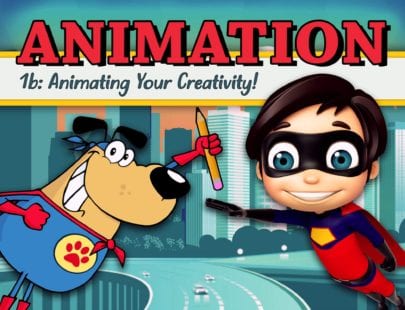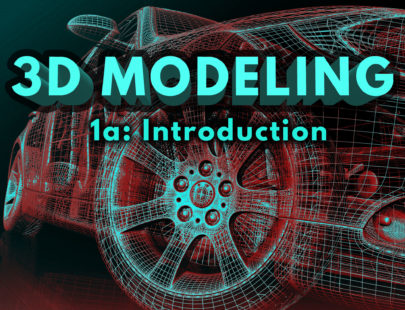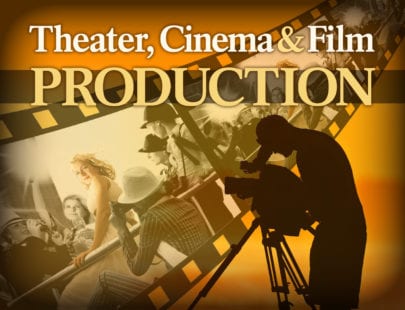
Animation 1a: Introduction
Have you ever watched a cartoon or played a video game where the animation of characters captivated you so much you wanted to create your own? If so, it’s time to immerse yourself in the world of animation. Meet the industry players such as directors, animators, and 3D modelers. Develop your story by exploring design, the 12 principles of animation, creating a storyboard, and leveraging the tools of the trade. Let’s bring your story to life with animation!
Units at a Glance
Unit 1: Basics of Animation
As a kid, you had your favorite cartoon to watch. You never missed a show, you probably binge-watched entire seasons in one day, and you were always left wanting more. But as you became more and more engrossed by the magic unfolding before your eyes, one question kept creeping into your mind: How did they do that? Not a question that can be easily answered; and soon the voice asking that question grew louder and louder in your brain until it was impossible to think of anything else, and your thirst for knowledge needed to be quenched. This has led you here, right now, to learn the secrets of this magical world; and make no mistake, this is magic. After all, magic is really just unexplained science. So let’s dive into that science.
What will you learn in this unit?
- Trace the origins and early history of the art of animation
- Explore how the eye and brain process moving images
- Compare the differences between past animation techniques and current animation technologies.
- Understand the 12 principles of animation that form the foundation of animation
- Apply two principles: squash and stretch and straight-ahead action
Unit 2: Hand Drawn Animation
Have you ever told a story to your friends? Maybe it was something exciting that just happened to you? In the moment of retelling that awesome experience, what do your hands tend to do? Humans move their hands when telling a story, especially when it makes them passionate. Now imagine people love your story so much that everyone wants to hear it, and sometimes more than once. Are you going to retell the same story over and over again? What if there were a way it could be retold without repeating yourself to every person who wants to hear it, but—and here’s the catch—you still get to use your hands? Dating back to the tales of the earliest cave dwellers, prehistoric humans figured out how to retell a story consistently. Welcome to hand-drawn animation.
What will you learn in this unit?
- Understand the history of hand-drawn animation
- Recognize common forms of traditional animation that are still in use today
- Apply the elements and principles of design
- Identify differences between the two most common forms of hand-drawn animation: Disney animation and Japanese anime
- Explain the effect of animation on today’s society
Unit 3: Camera Animation and Camera Angles
Thor lies beaten under the boot of Thanos who is about to strike him with a final blow. Suddenly, Thanos is struck by Mjolnir, the hammer only Thor is able to wield. Thanos turns to see who performed the impossible feat, and he can’t believe his eyes. Standing before him, wielding the hammer and challenging him to a fight, is Captain America. Great moments like these are remarkably memorable, but they can’t be executed without making the right decision about where to position the camera. Get ready to master the role of the silent character that most audience members overlook: the camera.
What will you learn in this unit?
- Recognize the common camera angles used in animation
- Compare the effectiveness of different camera angles and what they contribute to the mood of the animation
- Explain camera movements used in animation to emphasize the effects of different camera angles
- Tell a story through visuals and dialogue—in short, make a live-action video!
Unit 4: The Computer Animation Industry
Ever wonder how magicians create magic in movies and video games? The magicians we’ll be talking about are directors, animators, and 3D modelers, and their magic wands are computers, capable of performing an infinite number of algorithmic formulas that are too difficult to solve with calculators. Come inside and see how something created so easily in the imagination comes “alive” in the virtual world of computer animation.
What will you learn in this unit?
- Understand the basics of computer animation
- Explain the challenges faced by creators involved in major movies or video games and how they solve them
- Describe how films and video games are created from start to finish
- Identify the intricacies of post-production and other aspects involved in the creation of motion pictures and video games
- Judge the impact of technology on the business of animation
Unit 5: Digital 2D Animation
It’s time to create computer animation! Now that you have knowledge about how animation works, it’s time to put that knowledge into practice by creating an animation cycle—that is, an animation specifically made to be looped—commonly used in the industry. To do this, you’ll get to try out a new animation tool: the animation software known as Tupi.
What will you learn in this unit?
- Describe the Tupi user interface
- Apply a basic understanding of Tupi’s tools
- Create an animation cycle with a moving background
- Explain one of the most important principles of animation: timing
Unit 6: Animated Emotion
People directly communicate to one another through emotions. If animation is to succeed at simulating the real world, it is only natural to expect that animators will understand how facial expressions and body movement works. The main purpose of creating a film or interactive story is to communicate a message to the audience—that is, what the animators want the audience to experience when watching it. In this unit, you will think about what kind of message you want to express to the audience and how to communicate that message through animation.
What will you learn in this unit?
- Explain the rules governing motion in the world of animation
- Understand different styles of acting and expressions
- Develop your message to the audience through planning and management
- Communicate your message through expressions
Unit 7: Visual Storytelling
Want to go to the movies? Well, why do people go? Because of the story! It draws them in and makes them care about the characters, and it lets them immerse themselves in another world. Storytelling dates back to the days of the cave dwellers, and it remains the best way to entertain modern humans. How do you make sure your story will captivate the audience? We have the secrets and the tricks right here—come along and we will tell you a story about telling a story!
What will you learn in this unit?
- Understand the three-act script structure
- Classify different types of story patterns
- Identify the importance of story in animation
- Give characters depth and personality
- Create storyboards for animation
Unit 8: The Tools We Use
The ever-growing number of tools used in both the video game and film industries seems to increase by the month. Each tool extends the boundaries of the cutting-edge technology used to confound the minds of amazed audience members—which includes skeptical professionals who you might well think had already seen it all. In this unit, you will be introduced to the core tools that form the foundation of video game and film production and learn how to apply them for the purposes of your own animation.
What will you learn in this unit?
- Understand traditional and digital tools used in the industry
- Recognize how each tool is vital to specific stages in the production pipeline
- Identify common file formats used in the industry and why they are chosen over other formats
Required Materials
Physical
- Pencil
- Drawing paper
- Device with photo capabilities
- Notebook or Post-its, or some kind of book where pages are stacked and attached on one side so that you can flip the pages
- Paper
- Colored Pencils
- Markers
- Three lights (e.g., two lamps and a floodlight) to set up a three-point lighting system.
Several sheets of paper that contain a storyboard template
Software
- Word processing software
- TupiTube Desk Version 0.2.16
- Spreadsheet software
Other
- One or more actors
Optional
- Software application that allows 2D drawing, such as Adobe Photoshop, 2D CAD, or Kami
- Simple video editing software to combine your shots into one video clip (OpenShot, Blender, and Movie Maker 10 are examples of applications that are available for free. Windows 10 has a built-in video editing app.)
- Slide presentation Software



